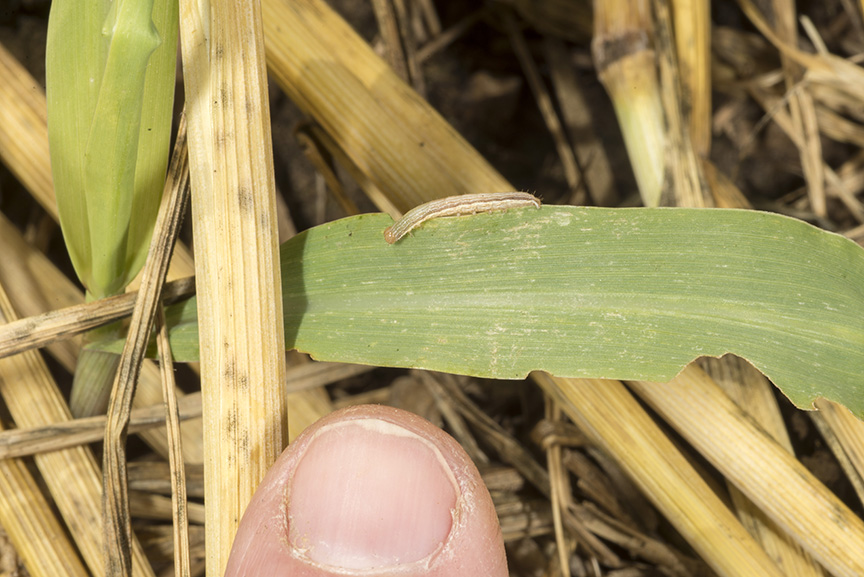Over the past seven weeks, armyworm moth captures at the Purdue Ag Research Centers (see accompanying “Armyworm Pheromone Trap Report”) have been variable, certainly not eye-popping! This happens most years, as do localized outbreaks. It is a reminder to conduct timely scouting in high-risk fields when the larvae are actively feeding, mid to later May. The increased popularity of cereal rye as a cover crop presents new opportunities for egg-laying females to find attractive food sources. The timing of planting this year, where many cover-cropped or weedy fields may be “planted green” is not helpful to those trying to avoid hungry armyworms.
Like every year, some (true) armyworm moths overwinter here, but some are also blown here from states to the south and west. Don’t confuse this annual pest with the fall armyworm (different species) that doesn’t arrive until mid-later summer. The fall armyworm caused a stir late last summer with damage to many forage fields, especially alfalfa. Contrast this with the (true) armyworm’s preferred hosts, that being grasses. Highest risk crops for egg laying is where dense grassy vegetation, e.g., wheat, grass hay, grass cover crops exist. Ideally, grass cover crops, will be terminated 2-3 weeks before corn emergence to prevent the “green bridge.” With this spring’s wet and windy weather, spraying of cover crops has been delayed and the 2-3 week window hasn’t been possible.
At this week’s Diagnostic Training Center (West Central Indiana), participants were able to see early armyworm damage on forage grasses, notching of the leaf from the blade edge to the midrib. With diligent scouting effort, were able to find tiny larvae (about 3/8” long) on the ground under residues. Larvae generally only feed on the foliage during the night. It won’t be long before these larvae are larger and their damage becomes very noticeable on grass hosts. Happy scouting!





